2024 Ford Ranger Adds Creature Comforts—and a Lot More Price
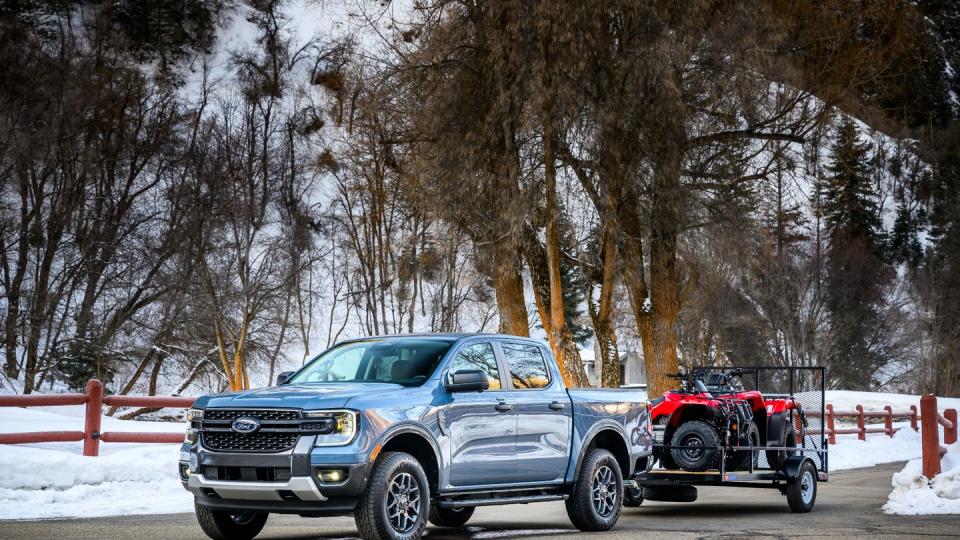
The 2024 Ford Ranger will start at $34,265, which is a big bump over the ’23 Ranger’s $28,495 base price.
That base price hike comes with a standard SuperCrew cabin, a standard 10.1-inch media screen, and an expanded suite of driver assistance features.
The 2024 Ford Ranger also introduces the Ranger Raptor to the United States.
Just like Joanie Loves Chachi, Ford’s Ranger is a spin-off. Once a package on full-size F-Series trucks, Ford shuffled its Ranger badge to its new, Courier replacement in the early 1980s.
Ford eventually killed off the Ranger line in the U.S. in the early 2010s, only to wisely give it the reboot the name justly deserved in 2019. Now, entering its fifth generation in the United States, Ford is giving the Ranger a serious update but isn’t straying from its main message.
The most obvious change for the ’24 model year is its streamlined order sheet. Ford is only offering the Ranger with one box and one bed for ’24. That’s bad news for those who like to know the difference between truck configurations, but this might be a benefit for the folks actually ordering their rigs. The only cabin available is the SuperCrew, a four-door body that seats five. This cabin is joined by a five-foot bed, which is now 48.2-inches wide between the wheel wells.
While Ford streamlined the body and bed options, the company did expand what’s available under the hood. The base engine is still the 2.3-liter turbocharged I4 mill that sends 270 hp and 310 lb-ft of torque through a 10-speed automatic transmission. Joining that I4 is a 2.7-liter turbocharged V6 that sends 315 hp and 400 lb-ft of torque through that same transmission. Of course, the Ranger Raptor adds another powertrain to the mix, a 3.0-liter turbocharged V6.
While the V6 turbos are both heading to the Ranger, you’re going to have to wait for some thoughts on those as we only drove the 2.3-liter.
Despite being a carryover, the entry-level 2.3-liter I4 does decent job. The throttle mapping is smooth, with a manageable tip in. You can throw it in sports mode, which makes for a more aggressive response. Though, even in sport mode, when telling the Ranger that you want all of its turbocharged 270 hp, you’ll have to wait a beat before the turbocharger gets up to speed and stuffs all of the air that 2.3-liter engine demands.
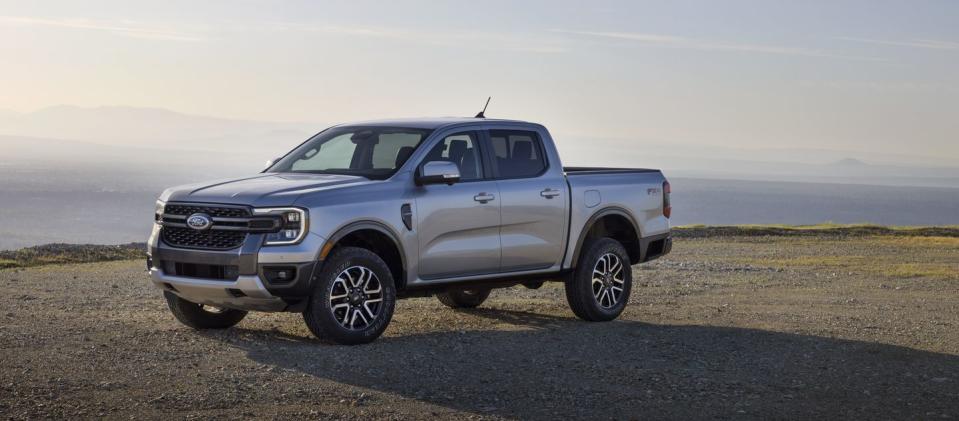
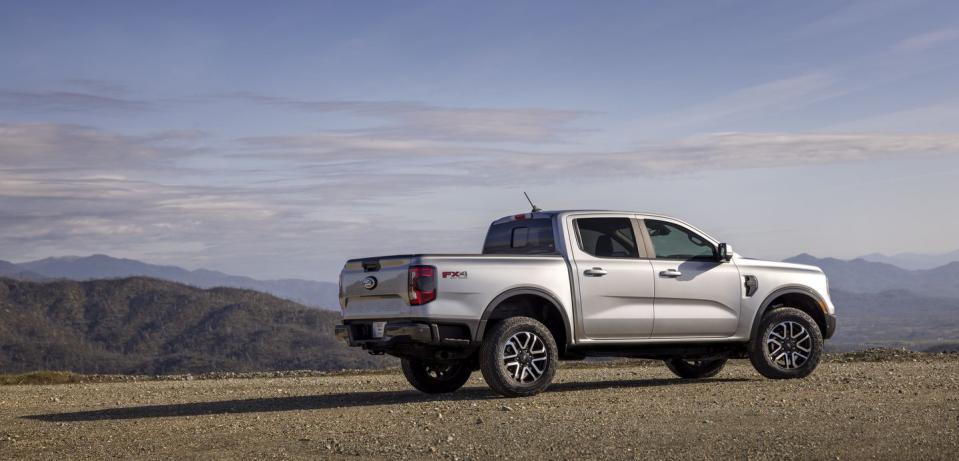
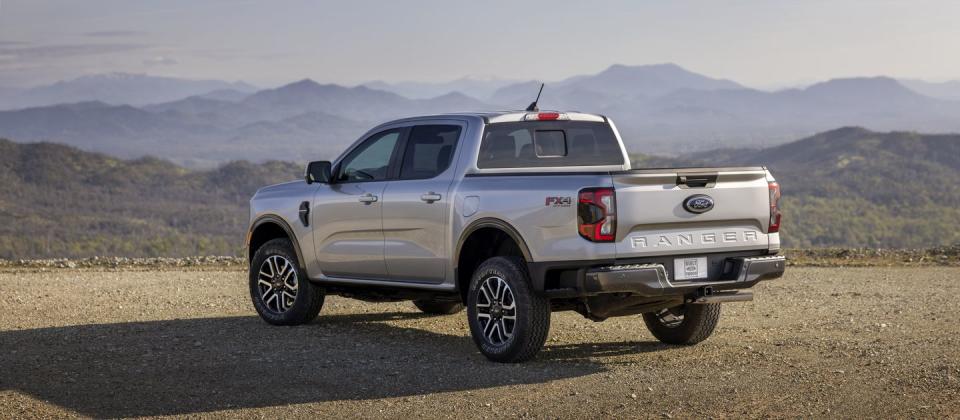
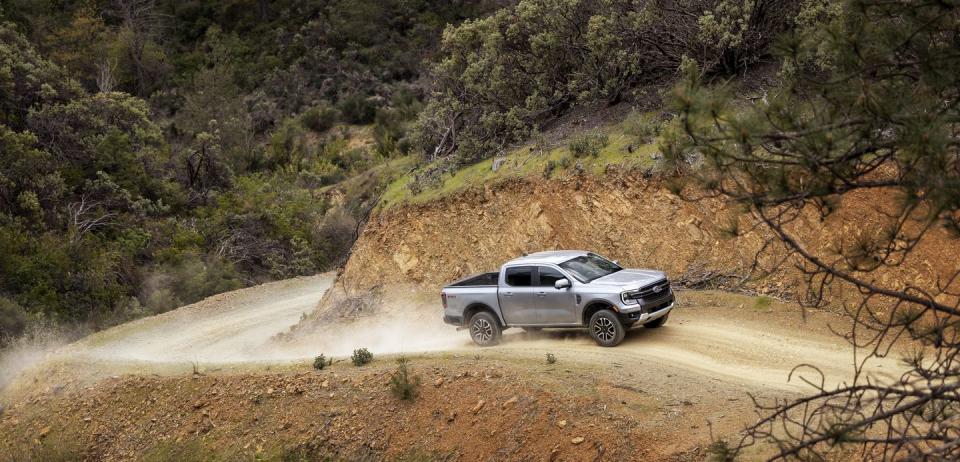
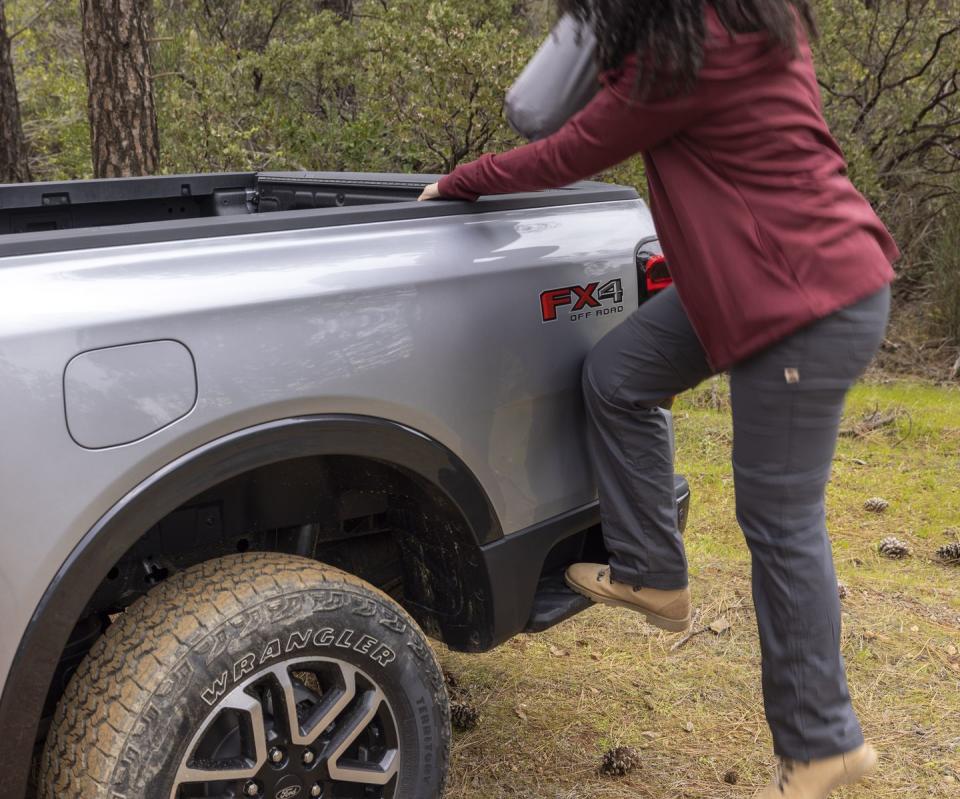
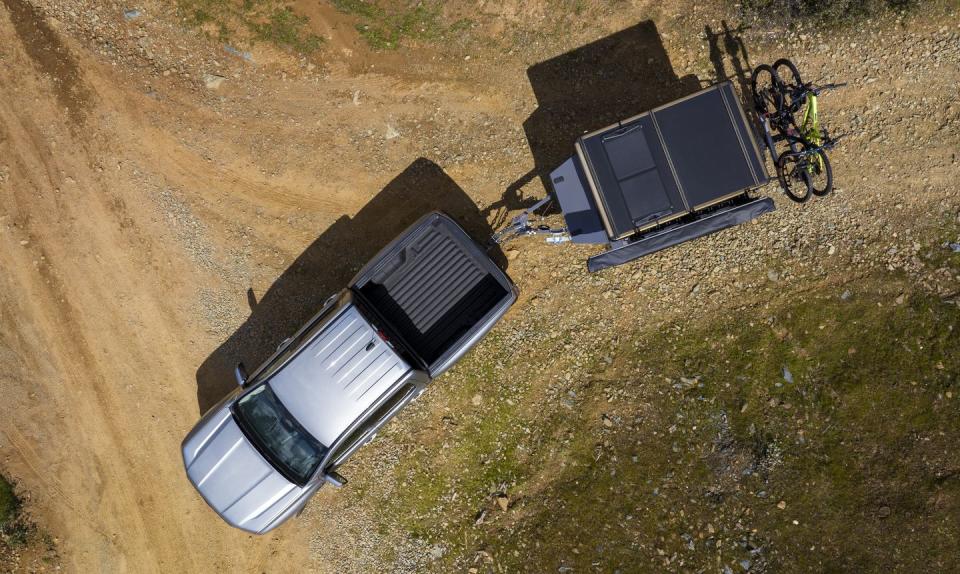
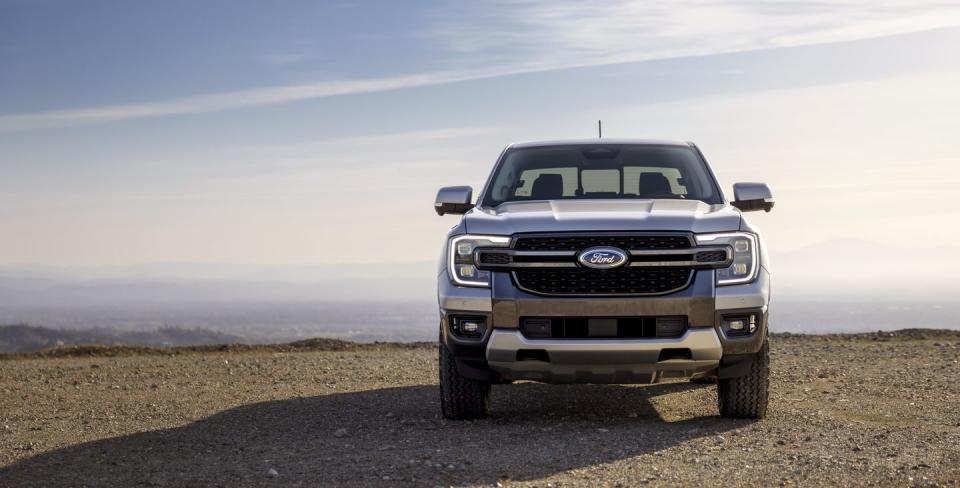
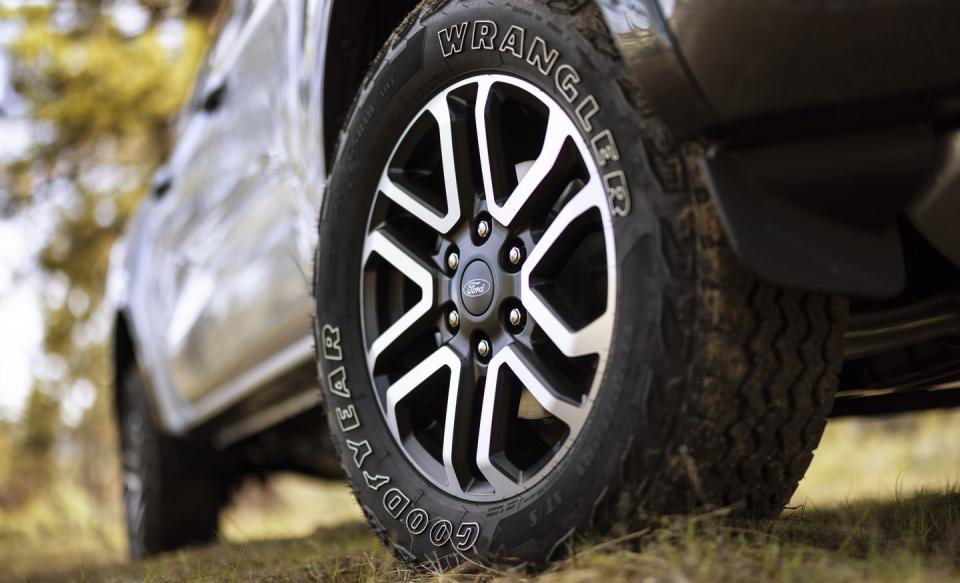
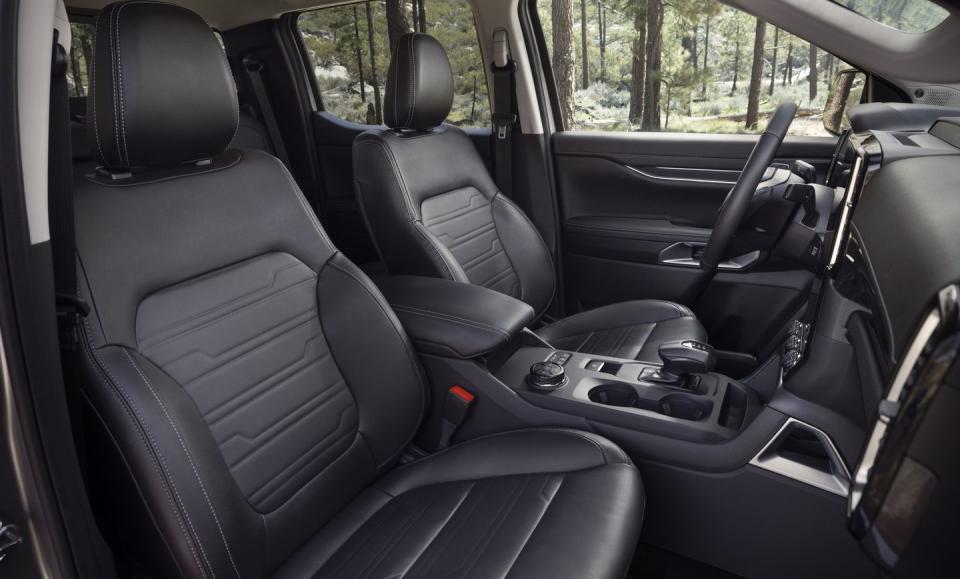
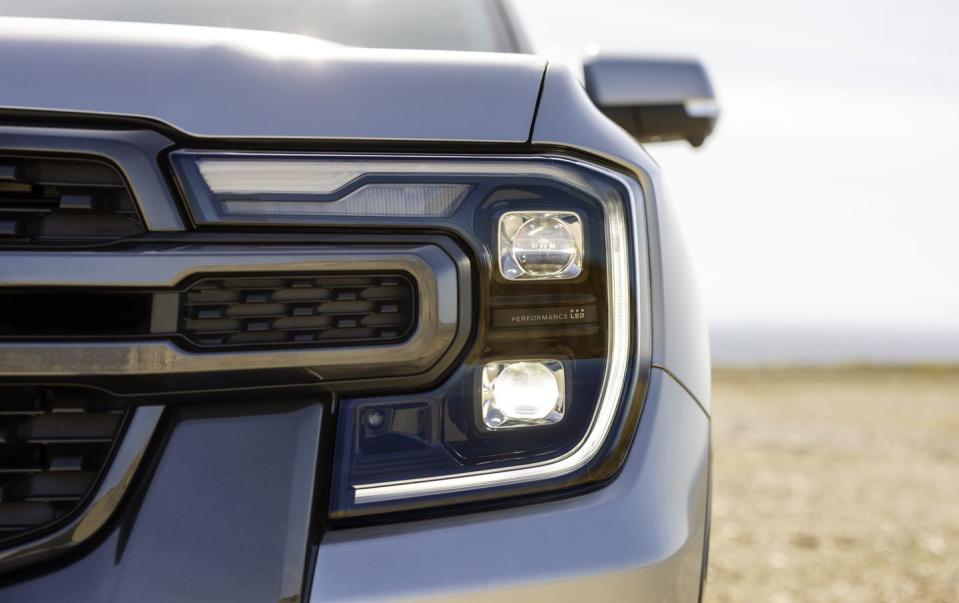
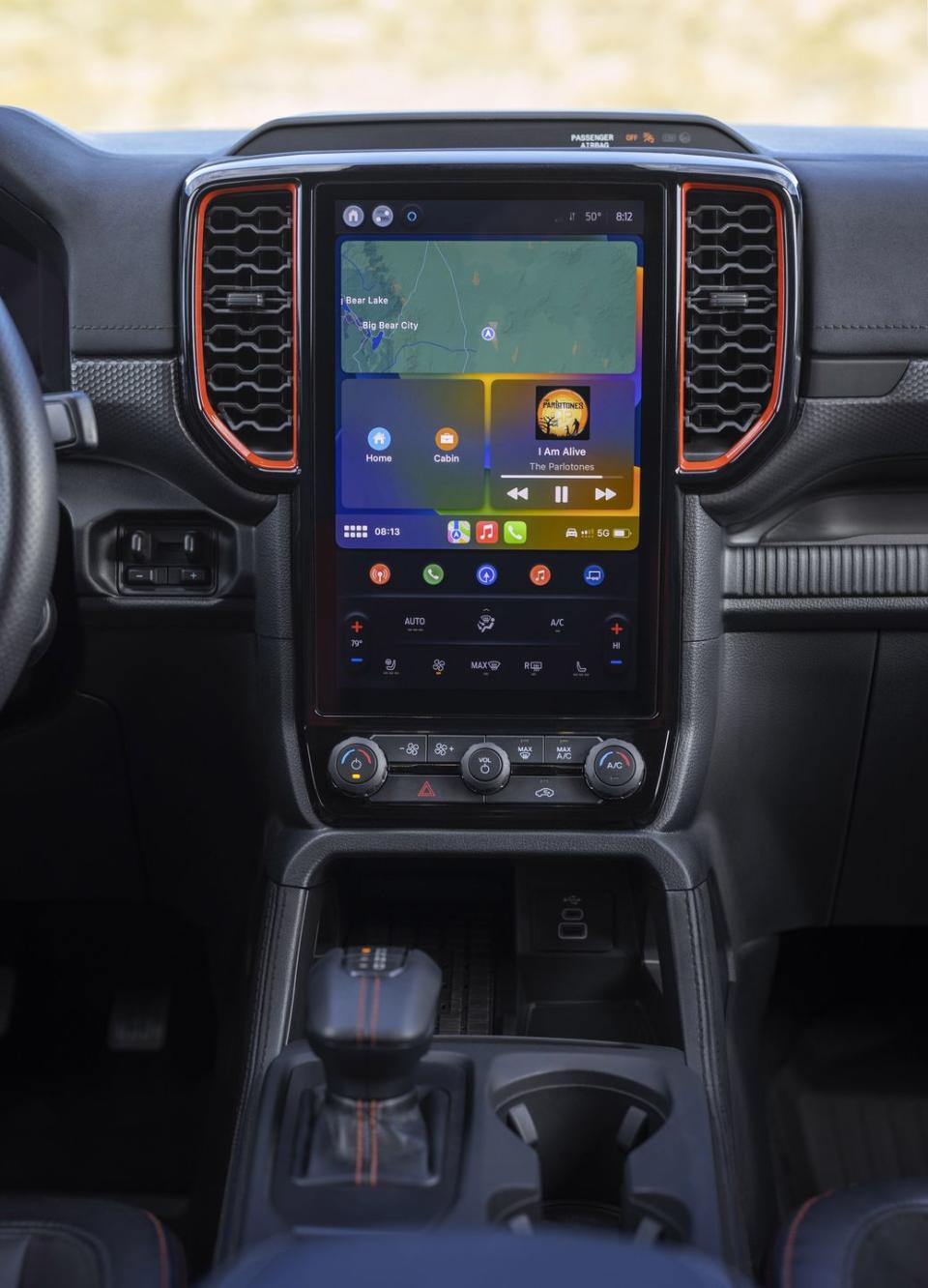
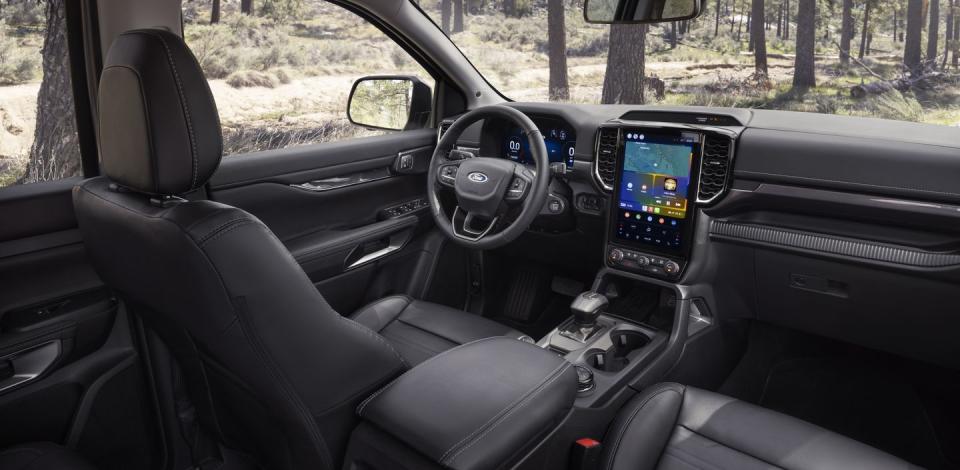
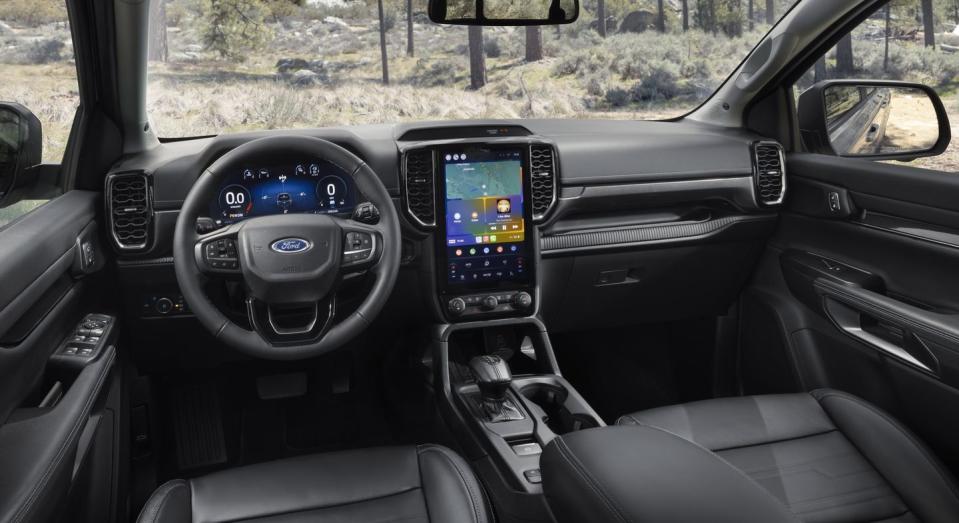

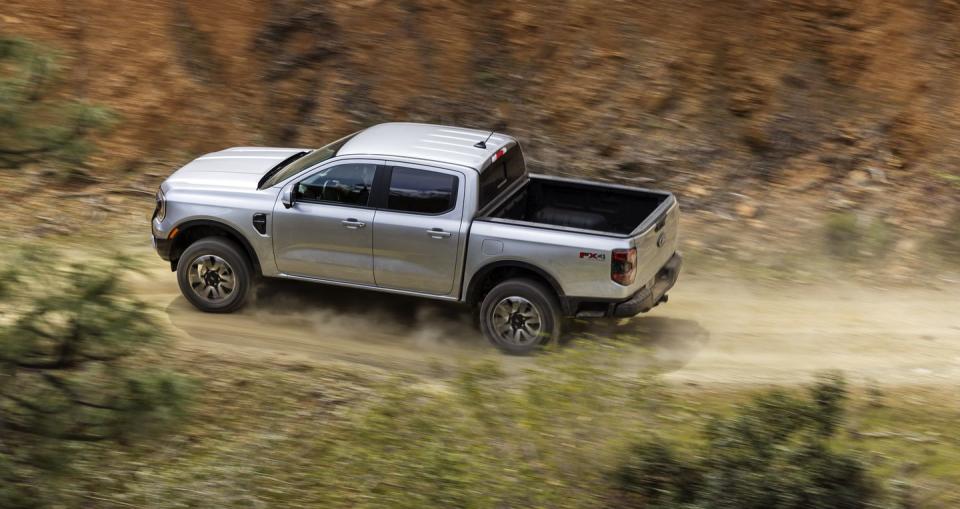



Managing that power is still the 10-speed automatic transmission. Controlling that transmission is one of two gear selectors depending on trim: the more budget-friendly XL models get a traditional gear selector, with the upmarket trims seeing a smaller controller. Thankfully, no Ranger will see a rotary dial selector. Despite how it’s controlled, the 10-speed transmission does a sound job, with quick gear changes on pavement and no noticeable wondering. Shifts under full power are noticeable, but not jarring.
Of course, where Ranger customers will spend most of their time inside the cabin. While you can still opt for vinyl floor coverings and cloth seats, all Ranger models will get a digital instrument cluster. This digital display starts with a standard 8-inch screen but can step up to a larger 12.4-inch screen as you move up the trim walk. Both digital displays work well, so don’t expect a penalty for not moving to a larger instrument cluster.
Like the digital cluster, there is also a pair of media screens. The standard-issue touchscreen spans 10.1 inches. The larger screen scales up to 12.0 inches. Now, both screens feature Apple CarPlay and Android Auto, so you can rest easy if you don’t want to spring for navigation or any extra options. The larger screen does control features like your seat heaters and is also home to your camera controls. Like the base-model instrument cluster, both screens work well. Shifting up to the XLT High equipment group will net you the larger touchscreen, among other features, on a lower-priced Ranger.
The real star of the added features is in the driver assistance systems. Base-model Rangers will come with automatic emergency braking, automatic high beams, and adaptive cruise control. Upgrading to the XLT models will net you blind spot detection and lane keep assist. If you want creature comforts like adaptive cruise control with stop and go, you’ll have to move up to the Laramie grade trucks, which also come with rain-sensing wipers, parking sensors, and Ford’s Active Park Assist.
As for materials, as we noted you can still get vinyl flooring on the base-model XL pickups. That could be a handy piece of information for trade fleet shoppers, or folks that just like to experience some utilitarian materials. If you’re not into vinyl, you can opt for carpet on base-model trucks for only $145. As you’d imagine, the carpet becomes standard equipment as you move along the trim walk. Materials, too, in the base model truck seem designed with durability in mind.
Hard plastic is found in ample supply, which really isn’t too big of a deal – it’s a truck. However, if you want soft coverings on the door panels, and touch points, moving up to the XLT and Lariat models will net exactly that. That said, even the nicest Ranger will bow down to the appointments found in an uber-loaded F-Series pickup.

Suspending all this is effectively the same underpinnings found on the current Ranger. At the rear, a pair of leaf springs manage the vehicle’s weight, payload, and axle location. In the front, a short-long-arm suspension controls the wheels, with steel coil springs and tubular shocks managing bumps. According to Ford, rear-wheel-drive trucks can carry a max payload of 1,806 pounds. If you add a front driveshaft and axle, that number shrinks to 1,711 pounds.
Without anything but a pair of people and a couple of backpacks, this suspension isn’t really put through the abuse that it might find rolling away from a big box store. However, just managing the task of commuting around paved streets in light traffic, the suspension does a fine job of controlling bumps and giving the driver and passenger a relatively comfortable cabin. It’s worth noting that it is on the firmer side without any extra weight soaking up the rear spring capacity.
Even though the cabin is relatively quiet, there is a whisper of wind and road noise that might remind some that they’re still driving a truck, and not a luxe sedan with a pickup bed. Add to that the firmer, truck-like ride and you have the making for a truck that still feels like a truck, even with a light steering wheel.
The biggest shortcoming? Price. For those who snagged an entry-level ’23 Ranger, you might see some sticker shock. The ’24 Ford Ranger will start at $34,265. That’s a substantial increase from the current Ranger’s $28,495 price tag. Of course, that price bumps to $37,910 if you want a four-wheel drive. Now, that price bump does come with a larger cabin and a significant consumer tech leap. Still, at the cheapest levels, Ford is undercut by Chevrolet and Toyota. Both are fierce competitors in a hot midsize truck race.
That said, the added standard consumer tech might help nudge folks into a Ford store to check out these trucks. The ’24 Ford Ranger is on sale now, and Ford says it’s currently shipping trucks to dealers nationwide.
Do you think the '24 Ford Ranger has what it takes to dethrone the Tacoma? Tell us your thoughts below.

 Yahoo Autos
Yahoo Autos 